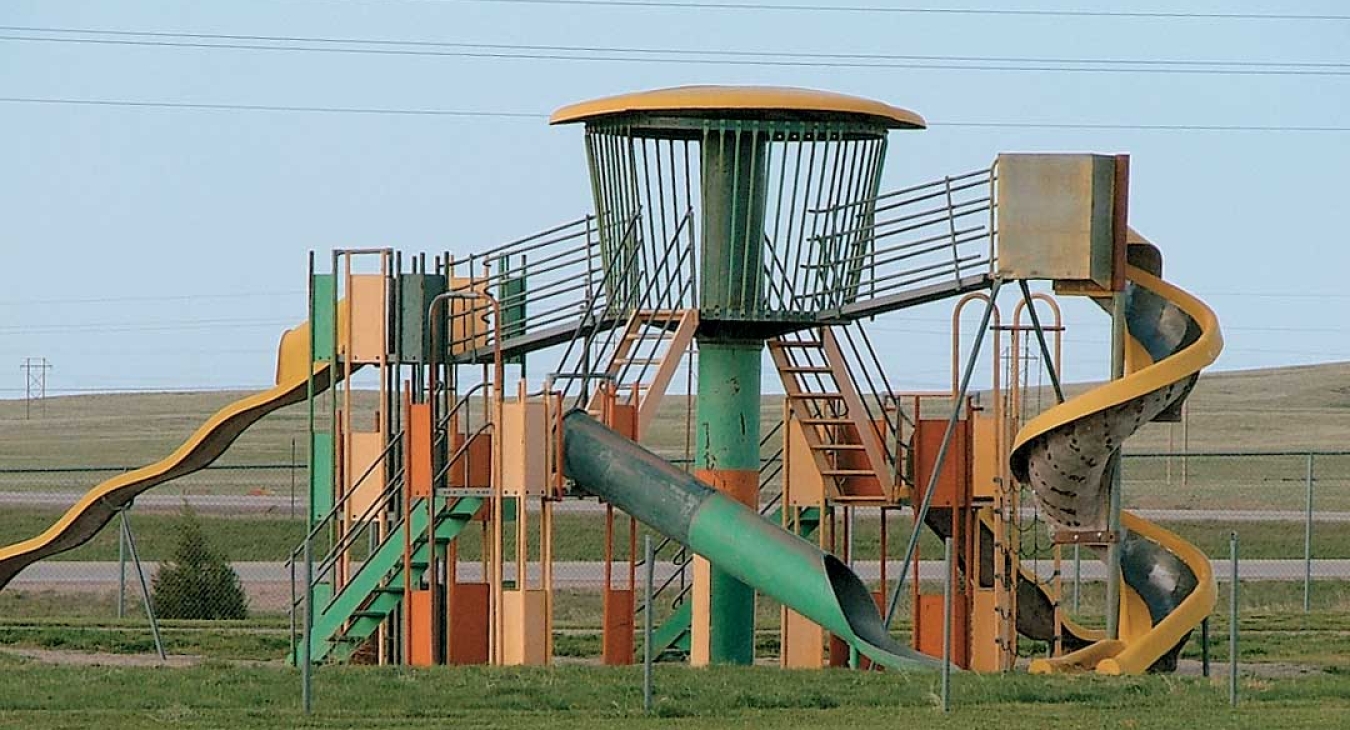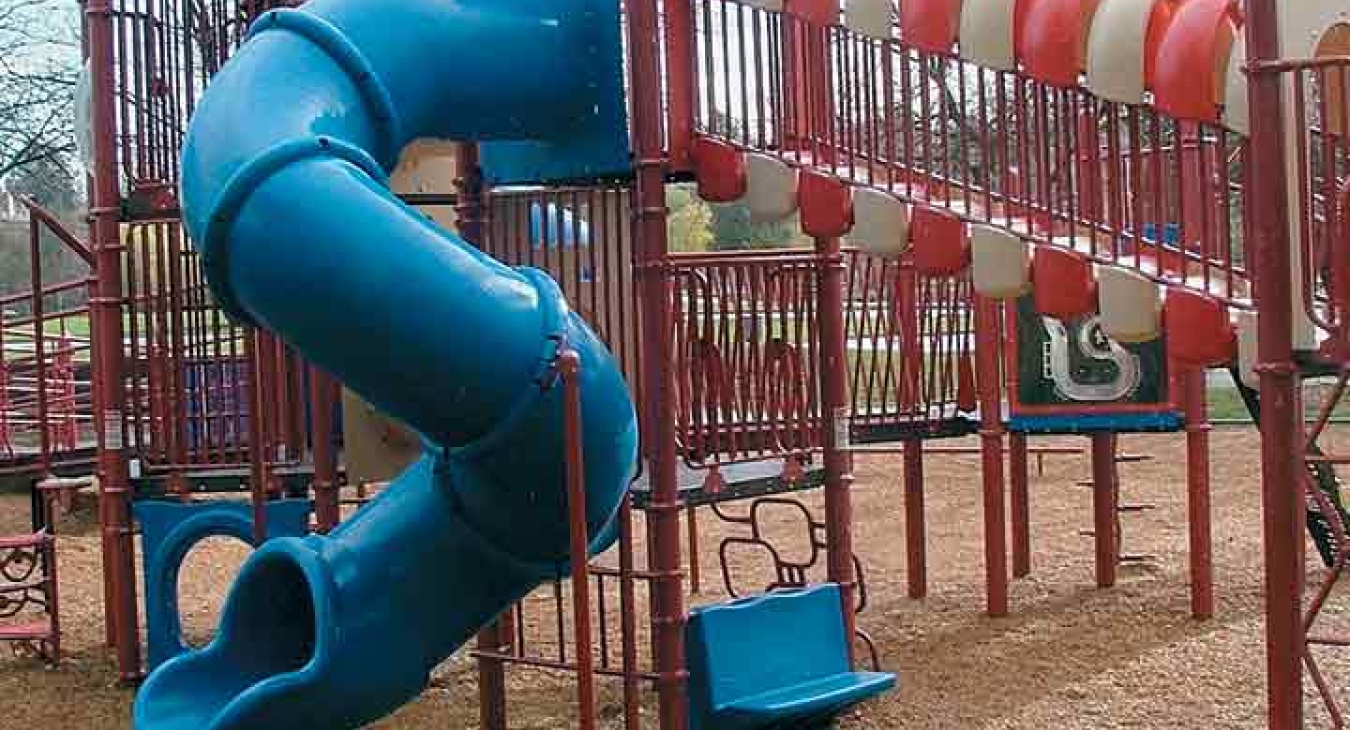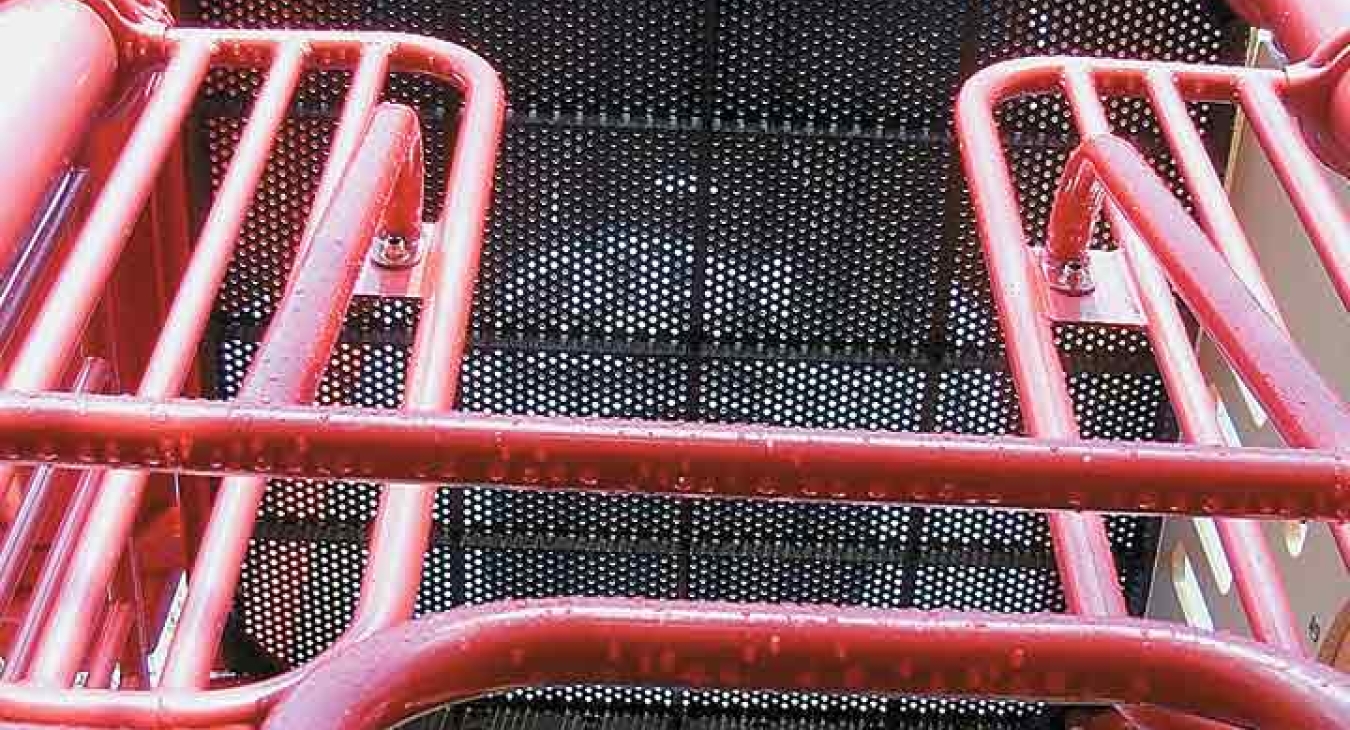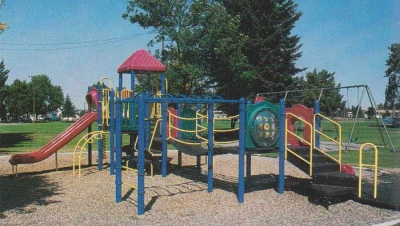High Expectations - Where do you stand on the playground height scale?
How high can you fly? Well if you’re a child with an imagination – and what child doesn’t have one – you can go very high. You can go at least as high as the top of that 12-foot deck on the playground, right?
As an adult concerned about children’s safety, where do you stand on the play equipment height scale? If you are being conservative, you want kids to stay low to the ground where you think they’ll be safer. After all, there are theories to support the notion that as height increases so does the risk of injury. If you are on the liberal side of the playground height scale, you might think like Jack Fry, a playground sales representative who declares...
“If you don’t fall, you aren’t playing hard enough.”
To a conservative on the playground height scale, Jack’s comments may sound injudicious, even uncaring. On the contrary, he’s the proud father of two children. Fry also sells playground equipment for PlayWorld, a company that sells the “high” stuff like the SkyTowers with elevated play surfaces 9 feet in the air.
“If you have been around the playground industry long enough, you’ve seen the pendulum swing from high equipment--say 12 feet to 15 feet high when asphalt underneath was considered the norm--to ultra-safe but ultra-boring equipment with no play components over 6 feet. Today, equipment manufacturers are striving for the challenge factor, but have the guidelines and standards to do it in a safe way,” says Fry. He continues, “The right safety surface will pass drop tests for head injury criteria at 6 feet and still pass at 9 feet, and in some cases above even 10 feet. The expected standard of care is to match safety surfacing with reliable test data to the equipment height.”
Miracle Recreation, another liberal height proponent, builds the Mega Tower, a fully enclosed hex deck system with a 14-foot slide where kids feel the thrill of height in a completely contained play environment. Miracle even has a Lean-Out enclosure where children can defy gravity while getting a bird’s-eye view of the world 14 feet below. How cool is that?
The term used by the industry for determining “how high is too high” is Critical Height–the maximum height from which a fall from a piece of equipment to the surfacing material below would not be expected to result in a life-threatening injury. Critical Height is a function of equipment height as well as the absorbancy of the surfacing beneath. The CPSC Handbook for Public Playground Safety cites, “The installation and maintenance of protective surfacing under and around all equipment is crucial.” Further, “Playground equipment-related injuries treated in U.S. hospital emergency rooms indicated that the majority resulted from falls from equipment.”
According to Joe Frost, knowledgeable playground safety advocate and author of numerous publications on playgrounds...
“There is no evidence in the literature, the interviews with experts, or the observations of children on playgrounds contrary to the principle that the further the child falls, the greater the likelihood of serious injury.”
If given the chance, children will climb as high as possible. Many experts agree that fall heights of playground equipment should be limited as an increase in the seriousness of an injury is relative to an increase in the height.
Tim Ahern, play equipment manufacturer and president of the BCI Burke Company, believes play equipment needs to be able to maximize the potential for fun and at the same time minimize the risk of injury. “In my experience as a manufacturer”, cites Ahern, “this can be accomplished without having to put children 12, 14, 18, 20-plus feet in the air. There is lots of fun, good exercise, and challenge children can enjoy much closer to the ground.”
Tom Norquist, senior vice-president for GameTime, another play equipment manufacturer, is a promoter of a child’s need to climb as a way to increase upper-body strength and learn balance and body control. Norquist points out, “Climbing aids in problem-solving, and challenges [children] to improve their memory, due to the need to remember certain grips and the location of hand and foot holds. Climbing also creates an awareness of space and direction by allowing the child to decide the best path to take to reach the intended destination.” Norquist says children become bored with a certain climbing challenge once they master it so he encourages playground providers to install several climbing components with varying levels of challenge to ensure natural development and improved skill sets. It is interesting to note that the GameTime product catalog, filled with climbing options galore, accomplishes its goal without featuring any components above 8 feet high.
Dr. Fred Rivara, Injury Prevention Coordinator for the University of Washington in Seattle says most injury specialists agree that “we need to look at the height of equipment and protective surfaces on the ground below. We need to maintain both. For instance, you may cover a hard surface with wooden chips, but eventually, these disintegrate and need to be replaced.” Further, “OSHA regulations in the workplace dictate that if someone is more than a few feet above the ground, they must be in a safety harness. Yet we have kids on playground equipment 10 feet high.”
Manufacturers of high equipment – say over 8 feet – and play equipment manufacturers that believe the intent of a playground can still be accomplished with equipment that isn’t sky-high, are equally savvy when it comes to litigation. It is their intent to protect children against foreseeable consequences of what could happen when a child uses a piece of equipment in unintended ways. It is impossible–although some people still try–to eliminate every potential for injury. But through safe design, proper installation, and timely maintenance such risks can be minimized.
I’m known to tell a story now and again about a grand opening of a new community playground celebrated with a ribbon cutting, media coverage, and congratulatory speeches by everyone including the town mayor. When the ribbon was finally cut and the children were let loose, the first kid on the playground was the general contractor’s son. Before anyone else, he was out of his seat, across the grass, over the retaining border, and onto newly installed wood surfacing. He jumped up on the transfer station deck where he promptly slipped and fell a whole 16 inches and broke his leg—true story. Even extreme conservatives can see that equipment height was not a contributing factor here and that lower equipment heights cannot prevent every injury.
A good analogy for understanding the extremes of the playground height scale is politics. Some people are extreme right-wing conservatives–and others extreme left-wing liberals. Some playground safety advocates don’t want kids even to get off the ground. Others want them to hang from trees like chimpanzees. However extreme points of view are shortsighted and leave little or no room for collaboration or consideration for other perspectives. Therefore, playground purchasers and providers have to find a comfort zone somewhere in between these extremes. Fortunately, both sides of the playground height scale agree on this–equipment height should be limited to the capacity of the safety surfacing beneath to cushion a fall and lessen the likelihood of a life-threatening or debilitating injury. After all, no matter how high or how low you stand on the playground equipment height scale, we all have the same goal--to provide challenge, excitement, and fun and fit experience for children in a safe playground setting.
References
- Does Height Matter? Parks & Recreation Magazine, April 2002
- www.ipema.org, Climbing – A Natural Way to Play, October 2005
- www.applesforhealth.com, Playground Accidents Serious Business, Volume 3, #10, August 2001
- The CPSC Handbook for Public Playground Safety, 1.3, 2.0, & Table 1 – Critical Height Of Tested Materials

























